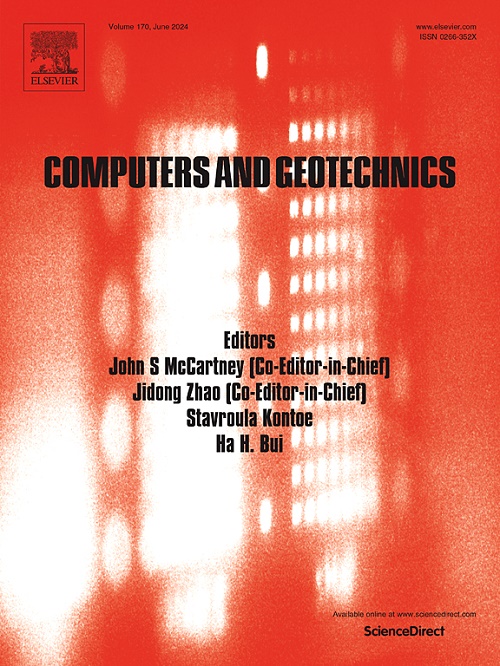Homogenisation method for braced excavations stabilised with deep-mixed columns
IF 5.3
1区 工程技术
Q1 COMPUTER SCIENCE, INTERDISCIPLINARY APPLICATIONS
引用次数: 0
Abstract
The stabilisation of deep excavations using columnar inclusions introduces three-dimensional (3D) complexities into design calculations. Often the intricate nature of the wall-soil-column interaction is simulated using simplified averaging techniques based on elasticity theory. This paper introduces a numerical technique to accurately describe the nonlinear elastoplastic response of both stabilised and natural soft clay for the case of excavations stabilised with deep-mixed columns. The technique allows mapping the 3D problem into a plane-strain (2D) counterpart by replacing the composite material made of natural clay and a region of overlapping deep-mixed columns with an equivalent homogenised material. The stress–strain response of the homogenised continuum is computed with a volume averaging technique (VAT) based on the volume fraction of each component (i.e. clay and column). The technique is implemented into a 2D finite element code enabling an effective representation of the behaviour of each constituent represented by advanced elastoplastic material models. After presenting the theoretical background and implementation procedure, the proposed method was verified against the results from the 3D calculations. The technique emerges as an efficient tool for the numerical analysis of stabilised deep excavations since it allows for plane strain analysis to yield results akin to computationally expensive 3D analysis. Thus, the method can significantly reduce the computational costs and can facilitate the easier incorporation of sensitivity studies.
求助全文
约1分钟内获得全文
求助全文
来源期刊

Computers and Geotechnics
地学-地球科学综合
CiteScore
9.10
自引率
15.10%
发文量
438
审稿时长
45 days
期刊介绍:
The use of computers is firmly established in geotechnical engineering and continues to grow rapidly in both engineering practice and academe. The development of advanced numerical techniques and constitutive modeling, in conjunction with rapid developments in computer hardware, enables problems to be tackled that were unthinkable even a few years ago. Computers and Geotechnics provides an up-to-date reference for engineers and researchers engaged in computer aided analysis and research in geotechnical engineering. The journal is intended for an expeditious dissemination of advanced computer applications across a broad range of geotechnical topics. Contributions on advances in numerical algorithms, computer implementation of new constitutive models and probabilistic methods are especially encouraged.
 求助内容:
求助内容: 应助结果提醒方式:
应助结果提醒方式:


